Propagation of violets by peduncles, description of the rooting process, video and photo
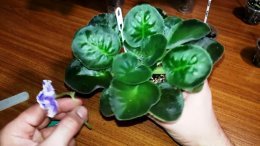
Propagation of violets by peduncles or other methods requires special skill and knowledge. We must not forget that these amazingly beautiful plants are extremely delicate and fragile.
Content:
- Methods for propagating violets
- Propagation of violets by peduncles
- Stepsoning
- Dividing the bush
- Reproduction of chimera violets by leaf
Methods for propagating violets
There are a number methods of reproduction these plants, differing in complexity and technique.
They are represented by reproduction methods, which we indicate in the table.
| Reproduction method | Features of getting a new bush |
| Children | Children You can start when the fourth or fifth leaf is formed at a height of five centimeters. For replanting, it is necessary to prepare a pot with a drainage layer filled with special slightly acidic soil. When planting, it is important not to allow soil to get into the growing point of the flower, as this can lead to its death. |
| Leaf | It is used when there is a small amount of planting material, if the violet is a rare variety. With this method, the leaf stalk is cut off completely, the cut is allowed to dry completely, after which it is treated with activated carbon. When planting, it is important that the cut fits tightly to the ground. It is better to plant in special moss (sphagnum), which can retain moisture and disinfect |
| Stepchildren | The side rosettes, which are formed in the side sinuses surrounding the main rosette, are cut off. The rooting process is similar to leaf |
| Seeds | First of all, a pair of violets is selected as parents with the necessary characteristics. Both flowers should bloom profusely and be healthy. During the flowering process, it is necessary to collect pollen from one violet and pollinate the flowers of another with it, in order to obtain ripe seed boxes after four months. Seeds should be planted in moist soil with plenty of perlite. When planting, the seed must be mixed with sand. After this, it is recommended to place the container with seedlings under special lamps and cover it with glass. It is important to prevent drying out and carry out systematic watering with a spray bottle. When seedlings grow to half a centimeter in diameter, it is recommended to transplant them and then grow them as seedlings |
| Peduncles | The simplest, but requires patience and accuracy |
When planting violets, it is important to be extremely careful.
These capricious plants require special attention and caution, but they will thank you a hundredfold for your love and patience.
Propagation of violets by peduncles
To propagate using this method, you need to select a flower with stipules on the mother plant (it is important to take those that have already opened or faded; buds will not work).
The peduncle must be cut with a clean, sharp knife and dried in air for ten minutes, then treat the sections with charcoal.
Rooting of flower stalks is possible in greenhouse conditions with high humidity. A mixture of sphagnum and perlite is suitable as a substrate.
Rooting will occur when a young rosette forms near the stipule.
After it has grown sufficiently, transplant it into another container with Saintpaulia soil.
Let's watch an interesting video about the propagation of violets by peduncles:
Stepsoning
Sometimes, with a high nitrogen content in the soil, you can observe the formation of small shoots in the axils of violet leaves. Since they often spoil the appearance, they are removed, but they can also be used for propagation.
After four leaves have formed on the stepson, cut it out of the mother’s rosette and place it in a substrate (sphagnum moss is suitable).
After the stepson takes root, it needs to be transplanted into a new container.
The entire process of reproduction by stepchildren takes at least several months. It is important to understand that it is better to cut out stepchildren even if you do not plan to reproduce.
Dividing the bush
This method is suitable for all violets, since with it they do not lose their varietal characteristics. You can divide a bush during spring replanting with a large number of shoots.
In this case, those shoots that already have their own roots are separated.
The rosettes cut off in this way, with their roots, are placed in separate containers.
Care in this case is similar to care for adult plants with maintaining moisture, heat and lighting.
When planting in new pots, you can use a special mixture for adult individuals. You can purchase it at any specialized store.
Reproduction of chimera violets by leaf
The reproduction of chimeras worries many flower growers, since the specific color of the leaves can only be preserved by pinching or propagation by children. Many people believe that Chimera leaf seating impossible, but this is not entirely true.
If you take a leaf and cut off the petiole, rooting is possible.To do this, it is recommended to divide the sheet into two parts by removing the central core.
So rooting occurs through two parts of one leaf.
Another method of leaf propagation is to select a light-colored cutting with a light-colored leaf. Much less often, but you can get a plant by planting a leaf with shade.
It is noteworthy that a chimera grown from a leaf gives better leaf propagation in the future. In addition, repeatability also depends on the growing conditions.
So the level of acidity of the soil has a special influence; its indicators should be close to neutral.
Propagation of violets through a peduncle is a fairly common practice among gardeners, preserving the varietal characteristics of the plant.
At the same time, despite the relative ease of this method, it requires attention and extreme accuracy in work.
Let's watch a video about the characteristics of chimera reproduction:

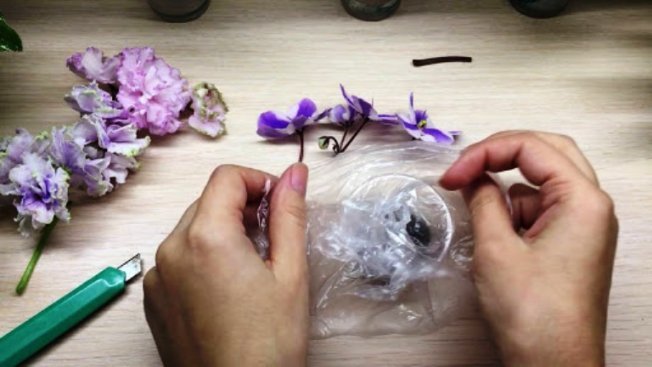



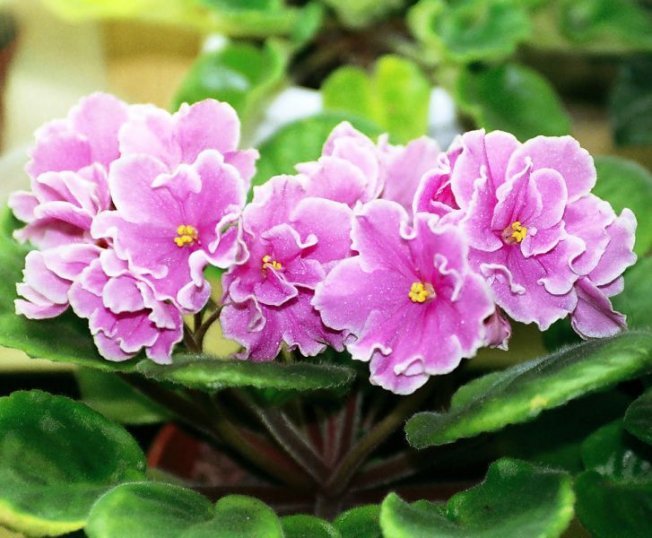
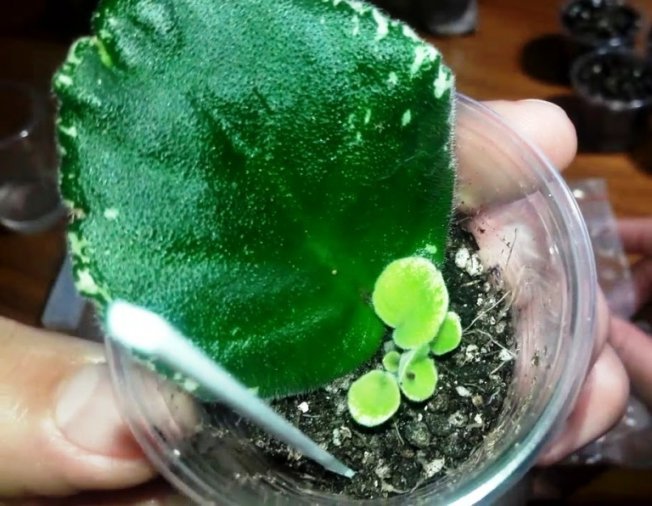
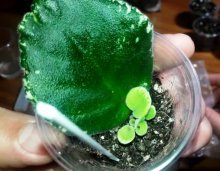

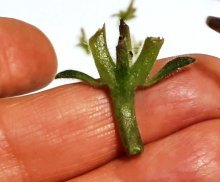
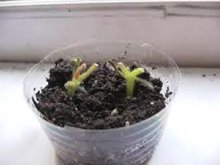

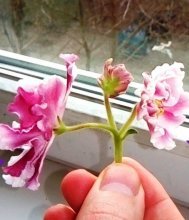






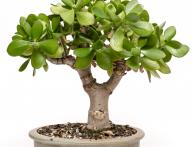
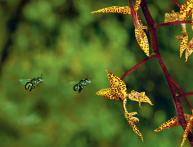

Comments
I always propagate violets using leaves. I put them in a glass of water so that the cut of the leaf does not touch the bottom of the glass. And it quickly takes root. And then I transplant it into a peat tablet.